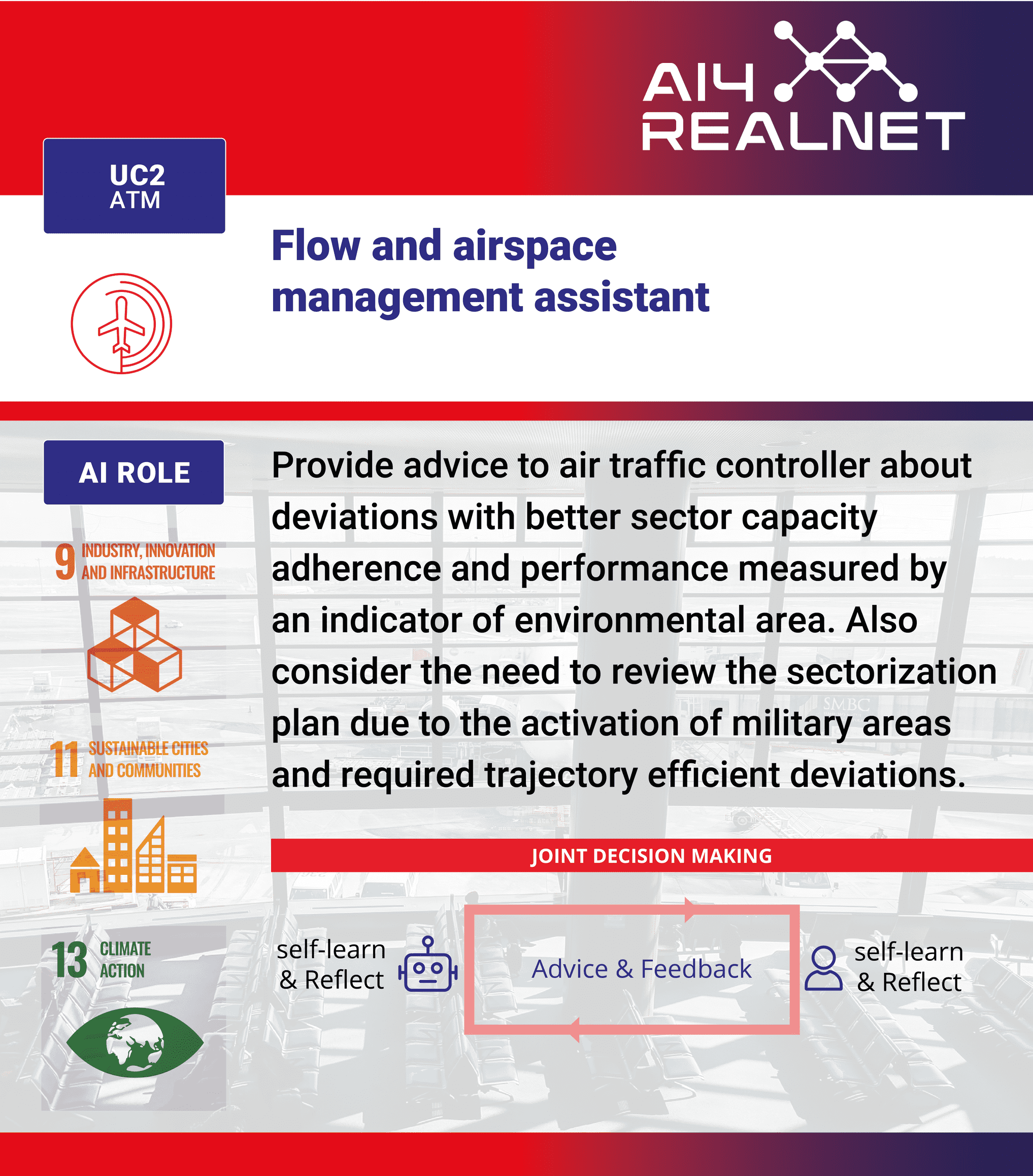Air Traffic Network Use Case 2
Flow and airspace management assistant
Context and motivation: For instance, in the Lisbon Flight Information Region (FIR), serviced by NAV Portugal, operational complexities arise from the activation of military areas, which can significantly restrict the usage of the upper airspace for General Air Traffic, requiring traffic to deviate horizontally, especially when in combination with unexpected events. Routing of flight around military areas is proposed and implemented in pre-tactical phases. As of today, there is no pre-analysis tool and/or integrated decision-support system to assist in, or even fully automate, the structuring of sectors with trajectory efficient (e.g., flight time and fuel burn) routes and sectorisations to keep the workload of the tactical air traffic controller (ATCO) within acceptable thresholds, i.e., without exceeding sector capacity limits.
Problem formulation: The activation/deactivation of military airspace in some airports can induce deviations from the flight plan routes. In this sense, to optimise the lateral deviation of the flights due to avoidance of an eventual temporary military-activated area, an AI assistant can analyse and suggest a decision in sectorisation and routing of the main flows in the flight information region (FIR). Human operators, more specifically the ATC and Flow Management Position (FMP) supervisors, will be supported by an AI assistant in how to configure airspace sectors best and optimise the routes for traffic flows at the enroute sectors of the FIR. The AI assistant will also act bidirectionally by allowing the human operator to nudge the AI generated recommendations in more favourable/acceptable directions. The airspace sectorisation and flow structures, as devised by the AI and nudged by the operators in the pre-tactical phase, will be used by the tactical ATCO to manage traffic around the military-activated areas.
Stakeholders: ATC and FMP staff manager/supervisor, Air Navigation Service Provider responsible for the flight information region, tactical air traffic controller, airlines and pilots.
Threats and vulnerabilities: Accountability, who is responsible for the bad performance of the AI system. Air traffic operations can be affected by events related to unexpected weather, flight emergencies, and unscheduled ATC personnel shortages. Access to high-quality, real-time data will be required to ensure optimal decision-making.
Key benefits: Facilitate continuing growth of air traffic demand while maintaining a high level of safety. Improve a key performance environment indicator based on actual trajectory, measuring the average en-route additional distance with respect to the great circle distance.
Download the Use Case file to see the complete description!
